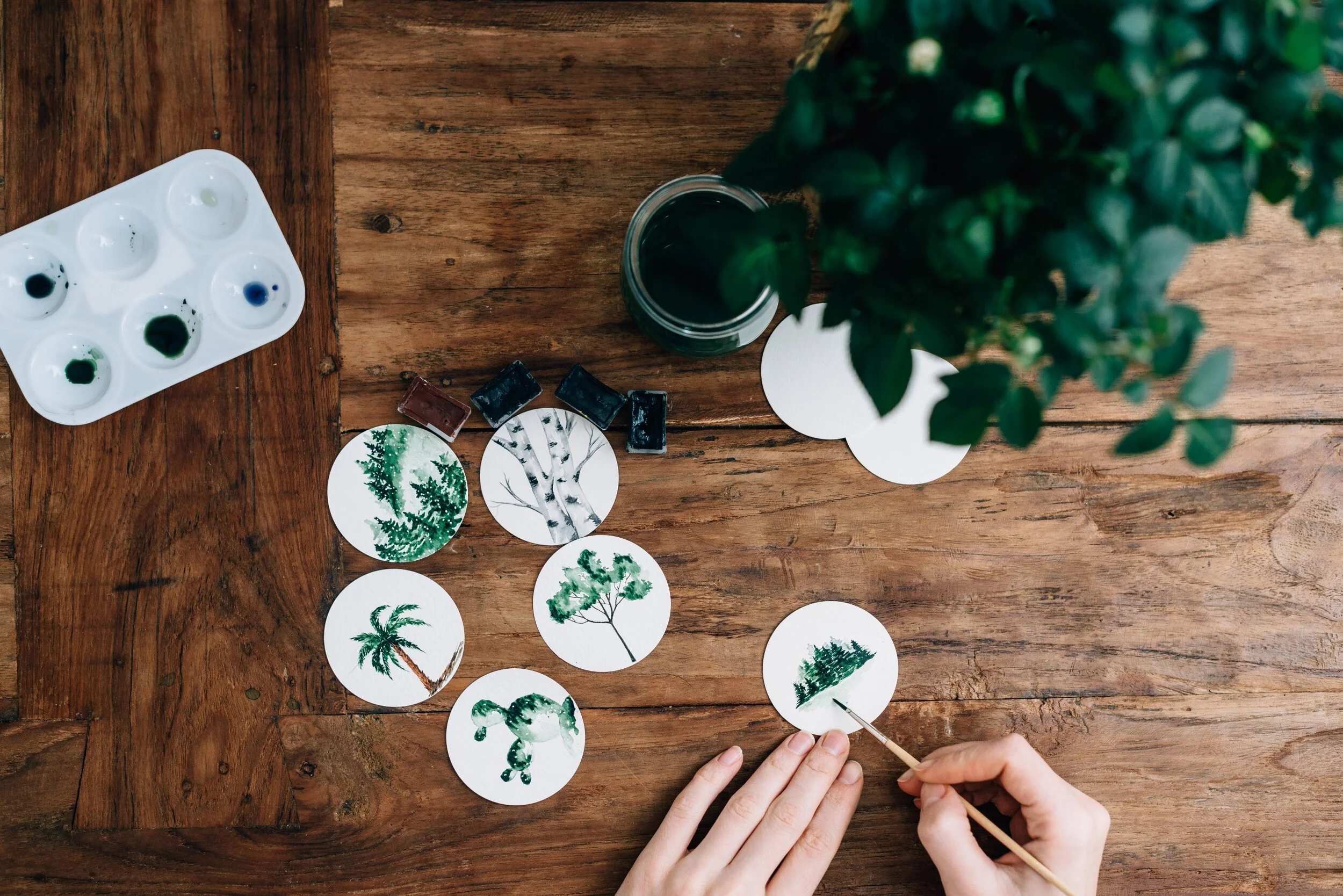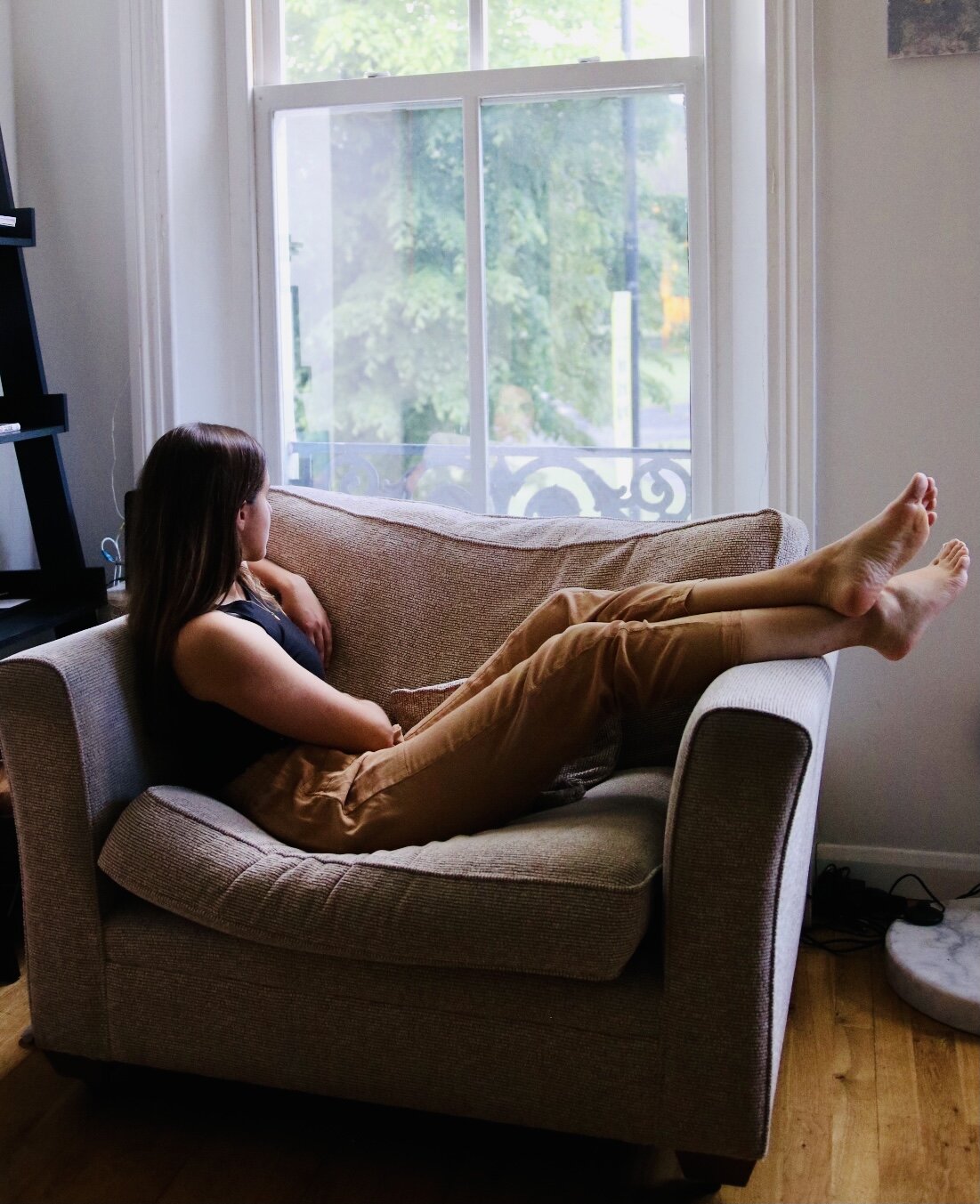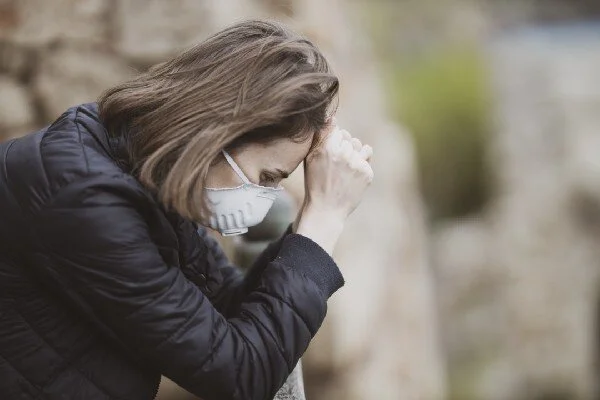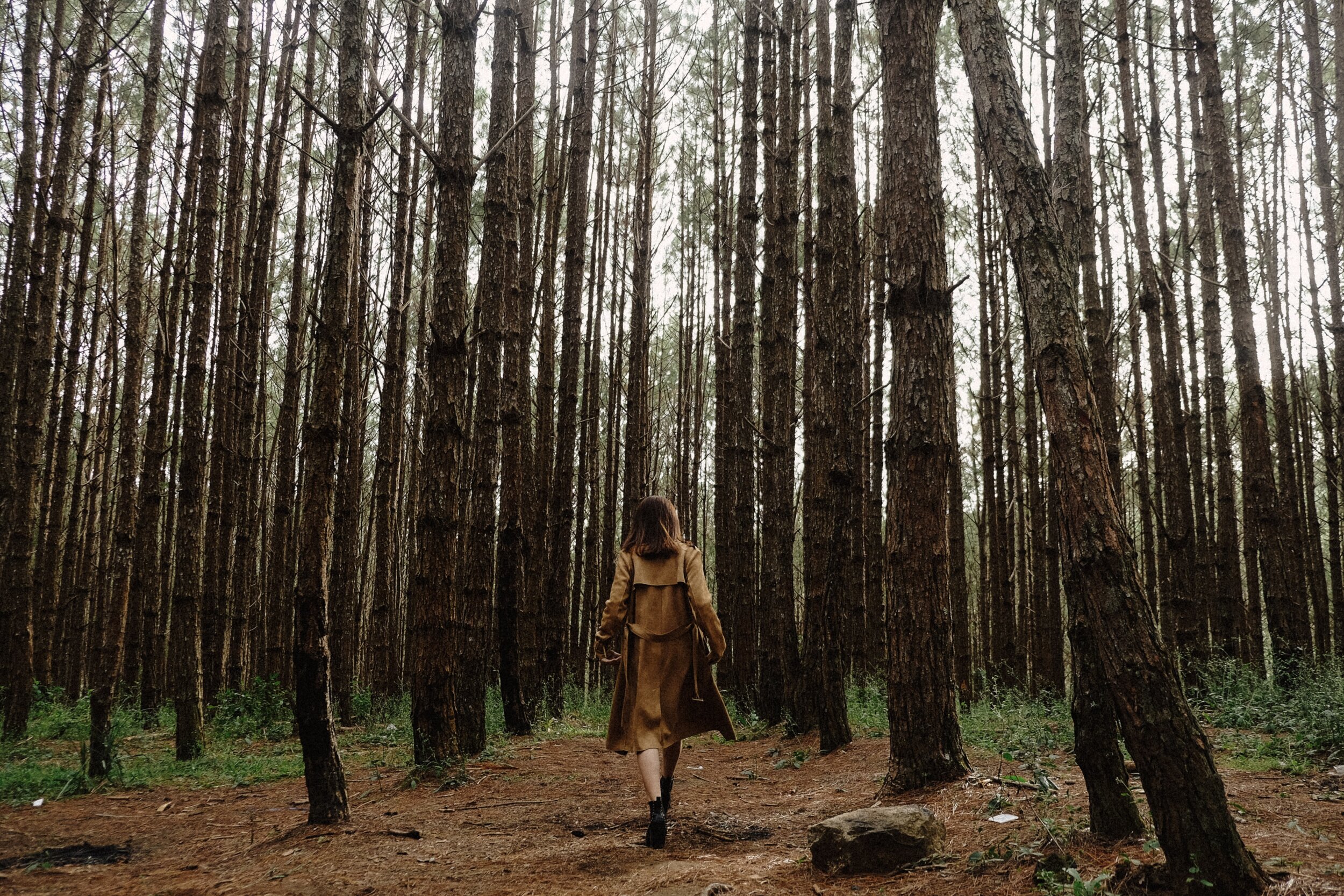How to Be More Creative: 4 Lessons Learned From a Year of Lockdowns
Note: This post was contributed by writer and poet Cecilia Callas.
I’ve always thought of creativity as one of life’s greatest treasures. After all, we’re taught from a young age that to be creative means to be special: the best painting is held up in front of art class, the most descriptive essay is read out loud. And then, later: tech employees are encouraged to use “white space time” just to create, while business leaders like Steve Jobs have spoken about the role of creativity in their success. LinkedIn has even declared creativity as the single-most important skill in the world for all business professionals today to master.
Creativity often feels like treasure: something to be unearthed and protected. Something that, like treasure, we find ourselves coveting because of its scarcity.
Something that has a tendency to get buried.
But instead of being covered in grime, creativity is often smothered by pressurized layers of self-doubt and distractions; obscured by endless to-do lists and obligations.
So, when the world ground to a halt one year ago and time seemed to slow, I felt a careful shift. Where I used to have to hack frantically with a shovel to make contact with the elusive well of my creative juices, I now felt an easy bubbling. The cancellation of life as I knew it had created a vacuum: time was putty in my hands, and out of that putty, I created.
I wasn’t alone. I noticed that friends and colleagues were sharing more creative works on social media, and revealing talents that they had kept hidden beneath a veil of busy schedules.
But as the year went on and uncertainty hung in the air with a relentless, choking presence, I noticed that our newfound creative drive was not infinite. The pandemic wore on us: our mental health suffered. We got tired of doing the same old things. And as such, our creativity ebbed and flowed, sometimes feeling hopelessly blocked upstream.
During a period of creative stagnation, I couldn’t stop thinking about it: what, exactly, about this past year of pandemic helped us to be more creative? What made us less creative?
There seemed to be multiple factors at play: lack of access to others seemed to hinder creativity - but access to the self fostered it. Feelings of anxiety and depression, for me, felt like a cork stoppered in my creative flow - but I would also often turn to creativity to make sense of my emotions. Lack of external stimuli, and our excess amount of free time, also seemed to play a role.
But how did these factors work together to ignite - or extinguish - that creative spark? To find out, I surveyed 50 people from across the world to understand what made us more and less creative during the pandemic - and how we can carry lessons learned into a more creative future.
How to be more creative
Before we dive in, it’s worth noting that those I surveyed were mostly young professionals in their 20s and 30s. Therefore feedback, and this article, are based on the experiences of this background.
Lesson 1: Free time
Leading the conversation around pandemic-era creativity was the sudden appearance of copious amounts of time. The highest number of respondents (62%) noted that their “amount of free time” had positively impacted their ability to create. With their routines stripped back to the bone, many mentioned that those first few months of lockdown were like a shock to the system: no more obligations meant no more distractions from creative passions.
“Without the pressure of working daily, I was able to explore new realms that I had always wanted to try, like DJing and producing music,” Molly Barber, a San Francisco-based yoga instructor, said.
“These things had always felt like something I’d get to ‘in another life, maybe.’ But the lockdown offered me the opportunity to try, learn, make mistakes, and grow.”
The simple addition of more time had given us back what busy schedules had stolen: the capacity to daydream and play, and a propensity for deeper self-reflection.
However, too much free time was also a blocker to creativity. An abundance of time, whilst at first sounds like a glorious pool full of creative potential just waiting to be stepped into, also became a maze with us in the center, trying to find the motivation to feel our way out.
Why? We may not have been in the right stage of boredom. According to one study, there are five different types of boredom: in the “Searching” and “Reactant” stages, we’re motivated to search for a way out. But if we edge over into the fifth boredom type -- Apathetic-- we can sink into feelings of helplessness, disinterest and depression.
Those I surveyed seemed to follow this pattern, distinctly. As a result of the pandemic, participants noted having: ‘more time to actually think about what I wanted to learn and do’ and ‘more flexibility and time to be creative when working from home.’
But as more months passed in lockdown, some felt creativity slipping beneath the surface. Kali Pereira, a sales support manager in Los Angeles, described filling up her time with creative projects in those early months -- but then, noticed her creative drive faltering as she slipped into a more apathetic state: “After 4-6 months, some of that spark to make the most of the time did soften, and I find myself missing it.”
What we’ve learned:
As vaccine rollout programs progress and our lives edge closer to ‘normality,’ many expressed fears that tapping into creativity could become more difficult under the weight of increased constraints on our time. To carve out the time in your schedule for creativity, try intentionality: wake up one hour earlier just to create. Set aside small chunks of time throughout your day just for daydreaming. Be ruthless in your dedication to the discovery of your creativity -- or risk it getting buried under routine.
Lesson 2: Isolation and solitude
In the living room of my London flat, there are three tall windows that overlook a park bustling with morning runners, mums pushing strollers, or socially-distanced groups of friends holding plastic flutes of prosecco as they lounge in the (rare) sunshine.
With this window to the world, at times, I’ve felt like I’ve never been alone. Other times, I’ve felt like I’ve been trapped in a bubble where no one can hear me, all of my words unsaid, my voice caught in my throat.
Solitude is both a kingdom and prison for creatives. On one hand, philosophers, artists and thinkers have always acknowledged solitude as means to develop inner wisdom. It is where we go to meet ourselves, and thus, some of our best ideas.
This is backed up by science, too: neuroscientists have outlined a process called “constructive internal reflection” which happens when our minds are not engaged with the external world and are instead encouraged to create new connections between complex thoughts.
On the other hand, this year has shown us that forced solitude can leave us crippled, hands outstretched towards the human touch that makes us feel seen. According to a recent study, research participants forced to endure ten hours of social isolation exhibited similar brain activity to those who had endured ten hours of food fasting.
Yes, you read that right -- the participants endured just ten hours of isolation. Many of us have now spent the majority, if not all, of the past twelve months in isolation, leaving me to wonder how we’ve been able to express creativity at all as we grapple with social starvation.
This paradox was echoed in my own research. On one side of the coin, 41% of respondents indicated that isolation and solitude had positively impacted creativity. Just a few unprompted mentions of the benefits of solitude included: “time to sit with myself without guilt” and “a deep listening to the body and heart’s calling.”
Arjun Desai, a marketer and blogger, captured his experience with solitude wonderfully:
“As we lost the ability to gather, I realized I needed to relearn the ability to gather with myself. And I found creativity to be the most beautiful expression of that time together with myself.”
However, almost the exact same percentage of people cited isolation and solitude as having a negative impact on creativity. It would seem, again, that creativity is playing games with us: we need solitude to be creative, but when it’s forced on us, we’re left feeling like we’re in physical need, grasping for nutrients provided by human contact.
For Kylee Lessard, founder of positive psychology blog Blue Sky Mind, isolation actually catalyzed her to create a way to meaningfully connect with others, helping her to feel more connected and in control of her feelings of isolation: “I started thinking about ways that I could use my blog to better connect with my closest friends during a period of isolation,” she said. This resulted in a blog series and multiple collaborations with other creatives that filled her with new ideas and allowed her to combine solitude and collaboration in a healthy, creative way.
What we’ve learned:
As we edge closer to busier social schedules, it’s crucial that we be intentional about carving out moments for self-reflection. Granted, declining social invitations after a year of social distancing sounds like the last thing any of us wants to do - but the research is clear: for creativity to spark, we must take the time for inner stillness to ignite the fire within ourselves. To balance social obligations with time for reflection, try dedicating a certain time every week (i.e. every Sunday from 3-5pm) for meditation or journaling. No plans, just pens.
Lesson 3: Mental health and overcoming adversity
Mental health and creativity are so inextricably linked that we can think of them as lovers embroiled in a tango, or foes in a game of tug-of-war: on one hand, poor mental health is a clear detriment to creativity. Writers and musicians in one study revealed that in times of stress, they don’t use their talents: that only when they are free from stress are they able to create. I experienced this myself recently: upon returning to a harsh, wintery lockdown after a period of mental openness over the holidays, I felt hopelessly uninspired, unable to find the motivation to write.
Those I surveyed could relate. When asked which factors negatively impacted their creativity, 52% of participants marked “Mental health state” as a detriment. Of his experience in the first months of lockdown, one respondent described: ‘I was lingering from the pain of my life effectively closing and the world we once knew was over. Depression soon followed - and that severely affected my creativity.”
When everything changed, loss and uncertainty hit our creative spirits, hard. Many of us were grappling with grief as we tried to come to terms with losing out on our plans and hopes for the year. And at times, this grief made it difficult to make use of the pandemic’s silver linings: even though we had more time to create, we simply could not find our creativity, that elusive treasure. We could not find the energy to even start looking.
Until, at some point, suddenly - we could. Battling and overcoming adversity, according to the authors of Wired to Create: Unraveling the Mysteries of the Creative Mind, can lead to the kind of psychological growth that is the perfect breeding ground for creativity. Many of those surveyed indicated that, at a certain point, creativity became a coping mechanism: a way to feel their way out of a labyrinth they’d be crawling unknowingly into.
“I tried to be more creative during the pandemic - it was a way to generate joy during a bad time,” Brooke Ewens, painter and co-founder of Australian company Gallant, said, noting that directing her focus into something creative helped her to enter a state of helpful mindfulness. “The satisfaction of completing a project and getting lost in the work kept me grounded and allowed me to escape from the doom and gloom.”
Other mentions from respondents about creativity and mental health included: “I was more creative when things were going worse for me - I used creativity to heal,” and “Instead of reading the news which only caused more fear, my goal became to create something that could bring joy.”
What we’ve learned:
Rather than it being something to discover, creativity can become a therapeutic practice that helps us cope as we try to make sense of the uncertain world around us. And as we all look to heal from a traumatic year, remember that creativity has healing powers. Throwing yourself into a creative project might be just what you need to make sense of last year’s loss and this year’s hope.
Lesson 4: Openness to experience and stimuli
For those who study creativity, one thing is agreed upon: creativity is all about making connections. Those connections happen when we’re stimulated, whether it be by self-reflection, our surroundings, or other people.
In ‘normal’ times, we sought out diversity in experience through travel, events or others. But during the pandemic, we’ve been forced to look for new ways to disrupt our familiar. When you strip back our daily experiences, previously rich in culture and collaboration, to the same day over and over again - where do we find the drive to create?
The shortest answer is that we seem to have gotten creative about how to get creative. We figured out ways of stimulating our brains when our usual sources of stimulation faltered.
The most popular sources of creative inspiration, by far, came from the natural world around us and the digital world in our devices. ‘Taking a long walk outside’ and ‘doing a state change for my brain’ and ‘watching the sunset every day’ were all cited as ways to get the creative juices pumping, while social media platforms like Instagram, TikTok, YouTube and Pinterest were repeatedly mentioned as ways to get new ideas for writing, visual arts, home DIYs, cooking and more. Those same platforms were also where artists shared their own creations, creating feedback loops that stimulated them to keep going.
Other newfound, important sources of creative inspiration included connecting with the spiritual world, connecting with the self, and connecting with collaborators and teachers virtually. It seems that even whilst we’re seemingly disconnected, we rise to the challenge of discovering new ways to connect with each other, ourselves, and our creativity.
What we’ve learned:
We’ve learned a lot over the past year: how to make banana bread. How to communicate with grandparents on Zoom. How not to panic buy. But we also learned about the resiliency of our collective creative spirit: how, even in our darkest and most monotonous of days, we’ll never truly lose our drive to create. How every person, even if he or she doesn’t consider themselves creative, can tap into that deepest part of themselves that yearns to express. How there will always be new sources of inspiration bubbling up from within us and around us, even if that means we redraw our treasure maps. And as we look forward to a different kind of future, we can rest a bit easier knowing that our creativity will always lay within us, if we sit with ourselves and think differently about how to dig for our creative treasure.
Cecilia Callas is a writer and communicator by trade and a poet and aspiring author by passion. You can find more of her work at @byceciliacallas on Instagram or @cdcallas on Medium.





